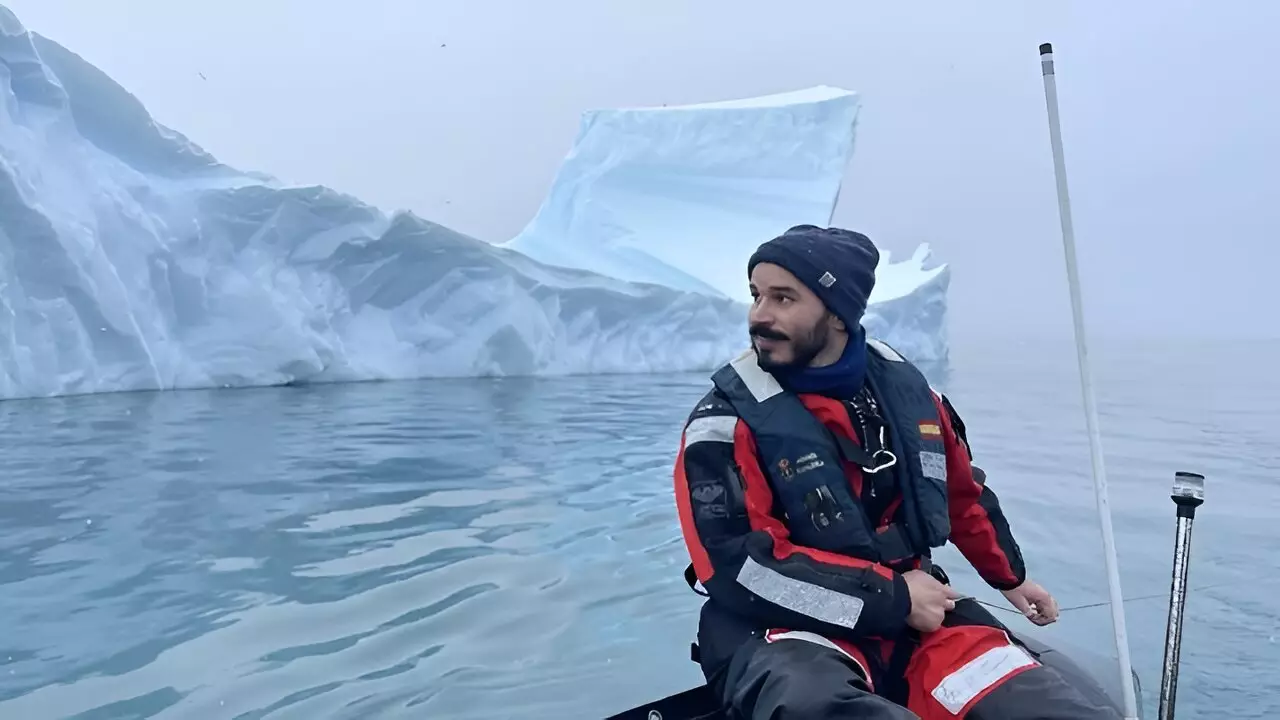A groundbreaking study led by the University of Barcelona, the Instituto Andaluz de Ciencias de la Tierra (CSIC), and the Imperial College London has introduced a paradigm shift in the understanding of the formation of the Antarctic ice sheet. Published in the journal Nature Geoscience, this research challenges the classical view on the origins of the Antarctic Circumpolar Current – the largest marine current on Earth crucial for ocean circulation and climate change. By examining the relationship between the current and the formation of ice in Antarctica, this study suggests a new perspective that can significantly impact future scientific investigations and climate projections.
Traditionally, it was believed that the Antarctic Circumpolar Current played a pivotal role in the formation of ice in Antarctica approximately 34 million years ago. However, this study, led by Professor Dimitris Evangelinos, unveils a groundbreaking revelation – the Antarctic Circumpolar Current is a consequence, not a cause, of the ice formation. According to Evangelinos, “To date, it was thought that the polar current boosted the formation of ice in Antarctica. Our study reveals that the oceanographic current dates later than the beginning of the Antarctic glaciation.” This discovery signals a shift in scientific understanding of the Antarctic ice and its delicate interaction with the climate system.
The emergence of this new perspective has profound implications for comprehending the current state and future trajectories of the Antarctic ice sheet in the face of climate change. The study indicates that the Circumpolar Current is highly sensitive to climate conditions, suggesting that changes in global climate may endanger the stability and protection of the frozen supercontinent. These findings underscore the urgency of further research on the interaction between the current and the Antarctic ice within the context of the evolving climate crisis.
This groundbreaking research is the result of collaboration between various scientific institutions, including the University of Barcelona’s Scientific and Technological Centers, the University of Granada, the University of Salamanca, and the University of Bordeaux. The collective effort of these experts from diverse fields, such as paleomagnetism, marine geosciences, and ocean dynamics, has played a crucial role in challenging the established theories and reshaping the scientific landscape surrounding the Circumpolar Current and Antarctic ice formation.
For years, the scientific community has debated the origins and characteristics of the Antarctic Circumpolar Current. One widely accepted hypothesis suggested that the current formed after plate tectonic activity separated Antarctica from South America, creating the Drake and Tasman Passages in the Southern Ocean. However, this new study presents an alternative perspective, positing that the ice in Antarctica predated the existence of the Circumpolar Current. According to Professor Isabel Cacho, “This means that the ice in Antarctica was formed prior to the existence of the Circumpolar Current…[it] is not what caused the Antarctic glaciation but the consequence of the ice formation.” This reevaluation challenges the long-held assumptions about the interrelationship between the formation of the Circumpolar Current and the Antarctic ice sheet.
Unveiling Ocean Dynamics and Climate Change
While this study disrupts conventional wisdom, it also opens up new avenues for understanding the intricate dynamics between the Antarctic Circumpolar Current and the Antarctic ice sheet. Gaining insight into these mechanisms is not only essential for comprehending current and future ocean dynamics but also for addressing the urgent challenge of climate change. As the planet faces the ramifications of a warming world, this groundbreaking research offers scientists and policymakers an enhanced understanding of the delicate balance between the Circumpolar Current and the Antarctic ice, contributing to more accurate climate projections and strategies for mitigation and adaptation.
The groundbreaking study conducted by the University of Barcelona, the Instituto Andaluz de Ciencias de la Tierra (CSIC), and the Imperial College London has challenged the traditional view on the origins of the Antarctic ice sheet and its interaction with the Antarctic Circumpolar Current. By revealing that the current is a consequence rather than a cause of ice formation, this research opens up new perspectives on the dynamics of the Southern Ocean and climate change. The interdisciplinary collaboration between various scientific institutions further enriches the findings and underscores the complexity of the Earth’s climate system. This paradigm shift in Antarctic research provides a solid foundation for future investigations and emphasizes the urgency of addressing climate change to protect the stability of the frozen supercontinent.


Leave a Reply